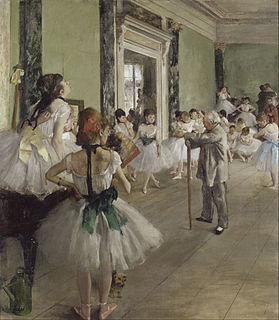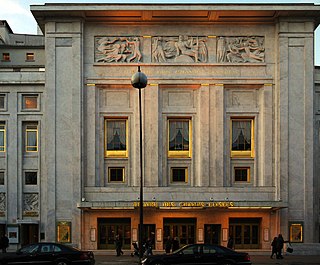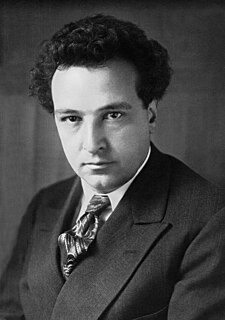
Arthur Honegger was a Swiss composer, who was born in France and lived a large part of his life in Paris. He was a member of Les Six. His most frequently performed work is probably the orchestral work Pacific 231, which was inspired by the sound of a steam locomotive.
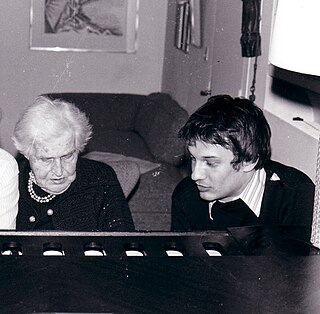
Marcelle Germaine Tailleferre was a French composer and the only female member of the group of composers known as Les Six.

Henri Sauguet, was a French composer. Born in Bordeaux as Henri-Pierre Poupard, he adopted his mother's maiden name as his pseudonym. His output includes operas, ballets, four symphonies, concertos, chamber and choral music and numerous songs, as well as film music. Although he experimented with musique concrète and expanded tonality, he remained opposed to particular systems and his music evolved little: he developed tonal or modal ideas in smooth curves, producing an art of clarity, simplicity and restraint.

Le Bœuf sur le toit, Op. 58 is a surrealist ballet made on a score composed by Darius Milhaud, which was in turn strongly influenced by Brazilian popular music. The title is that of an old Brazilian tango, one of close to 30 Brazilian tunes (choros) quoted in the composition. The piece was originally to have been the score of a silent Charlie Chaplin film.

Arthur Gold and Robert Fizdale were an American two-piano ensemble; they were also authors and television cooking show hosts.
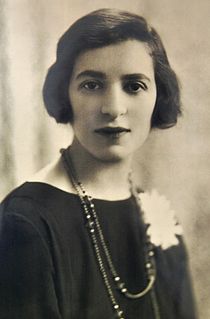
Marcelle Meyer was a French pianist. She worked with a group of musicians known as Les Six of whom she was the favored pianist.
L'éventail de Jeanne is a children's ballet choreographed in 1927 by Alice Bourgat and Yvonne Franck.
La guirlande de Campra is collaborative orchestral work written by seven French composers in 1952. It is in the form of variations or meditations on a theme from André Campra's 1717 opera Camille, reine des Volsques.
La guirlande de Campra is a ballet made at the New York City Ballet by ballet master John Taras to eponymous 1952 music composed by Georges Auric, Arthur Honegger, Daniel-Lesur, Alexis Roland-Manuel, Francis Poulenc, Henri Sauguet and Germaine Tailleferre, after a theme from André Campra's 1717 opera Camille, reine des Volsques. The premiere took place December 1, 1966 at the New York State Theater, Lincoln Center.
Le Boeuf sur le Toit is the name of a celebrated Parisian cabaret-bar, founded in 1921 by Louis Moysés which was originally located at 28, rue Boissy d'Anglas in the 8th arrondissement of Paris. It was notably the gathering place for the avant garde arts scene during the period between the wars. Maurice Sachs chronicled it in his 1939 book Au temps du boeuf sur le toit. Currently it is at 34, rue du Colisée, having moved five times within the 8th arrondissement. The current building dates from the 18th century.
L'Album des Six is a suite of six piano pieces published in 1920 by Eugène Demets, and written by the members of the group of French composers known as Les Six.
Camille, reine des Volsques is an opera by the French composer André Campra, first performed at the Académie Royale de Musique on 9 November 1717. It takes the form of a tragédie en musique in a prologue and five acts. The libretto, by Antoine Danchet, is based on Virgil's Aeneid and concerns the Volscian queen Camilla.
L'Homme et son désir, Op. 48, is a ballet composed by Darius Milhaud from 1917–18, based on a scenario of Paul Claudel. It was written in Brazil, where Milhaud had accompanied Claudel as a secretary when the latter was appointed ambassador to Rio de Janeiro.
Variations sur le nom de Marguerite Long is a collaborative orchestral suite written by eight French composers in 1956, in honour of the pianist Marguerite Long.
From 1916 to 1920, the salle Huyghens located at 6 rue Huyghens in the 14th arrondissement of Paris, was the name given to the studio of painter Émile Lejeune (1885–1964), which the latter put at the disposal of his musicians, poets and painters friends to make a theater and exhibition hall.

The Music of Francis Poulenc (1899–1963): A Catalogue, abbreviated FP, is a chronological catalogue of Francis Poulenc's works which was published by Carl B. Schmidt in 1995. Schmidt provides for each known composition, which includes unfinished, unpublished and lost works, a detailed history of composition and performance, and lists manuscripts and publications.
Jean Börlin was a Swedish dancer and choreographer born in Härnösand on March 13, 1893 and died in New York on December 6, 1930. He worked with Michel Fokine who was his teacher in Stockholm.

